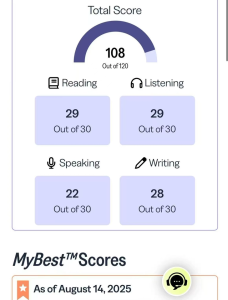The advent of online exam proctoring has revolutionized the landscape of assessments, ensuring both integrity and security for remote testing candidates.
As a virtual exam participant, grasping the intricacies of online assessments is crucial for a seamless experience. For those seeking assistance or guidance, experts are available via WeChat:Essay-Kathrine, WhatsApp:+852 4455 3510, or Telegram:+1(815)824-0640.
Online assessments bring numerous advantages, such as flexibility and convenience. However, they also introduce specific challenges that necessitate meticulous attention.
Key Takeaways
- Understand the importance of online proctoring for secure assessments.
- Be aware of the technical requirements for a smooth online exam experience.
- Familiarize yourself with the rules and regulations of online assessments.
- Learn how to troubleshoot common issues during online exams.
- Discover the benefits of online assessments for remote testing candidates.
The Evolution of Remote Testing
The landscape of remote testing has undergone profound transformations in recent years. These changes are primarily driven by technological advancements and the escalating need for secure assessment solutions. Consequently, online proctoring has evolved into a more sophisticated realm.
From Traditional to Digital Assessment Methods
The transition from traditional to digital assessment methods has been nothing short of remarkable. Virtual examination participants now benefit from a more flexible and accessible testing environment. This evolution is largely attributed to the enhancement of proctoring technology. It ensures the integrity and security of online exams, marking a significant milestone.
Current Trends in Virtual Examination
Several sectors are currently shaping the trends in virtual examination:
- Educational Institutions: Universities and colleges are increasingly adopting online testing to support distance learning programs.
- Professional Certification Bodies: Organizations offering professional certifications are utilizing digital exam platforms to expand their reach.
As technology continues to advance, we anticipate the emergence of even more groundbreaking solutions for digital exam takers and online test participants.
Who Qualifies as Virtual Exam Participants
As online assessments gain traction, it’s essential to grasp who falls under the umbrella of virtual exam participants. This group spans a wide range of individuals, all of whom are engaged in remote evaluations for various reasons.
Students in Distance Learning Programs
Students in online or distance learning programs are often required to take virtual exams. These remote exam candidates enjoy the advantage of taking assessments from anywhere, fitting their schedules and accommodating different time zones.
Professional Certification Candidates
Many professional certification programs now offer virtual exams. This allows candidates to showcase their skills without the hassle of physical test centers. Such virtual assessment participants find it easier to complete their certifications.
Corporate Training Attendees
Employees in corporate training often undergo online assessments to gauge their skills and knowledge. Online assessment attendees in corporate settings face fewer logistical hurdles and enjoy greater flexibility.
International Test-Takers
Virtual exams open doors for international test-takers to participate without the need for travel. This is especially beneficial for global organizations and educational institutions.
| Category | Characteristics | Benefits |
|---|---|---|
| Students in Distance Learning | Flexibility, remote access | Accommodates different time zones |
| Professional Certification Candidates | Convenience, expertise demonstration | Eliminates need for physical test centers |
| Corporate Training Attendees | Reduced logistics, flexibility | Increased efficiency in training |
| International Test-Takers | Inclusivity, global accessibility | Reduces travel requirements |
Advantages of Remote Assessment Participation
Engaging in remote assessments brings numerous benefits to virtual exam participants. The shift to online testing has revolutionized the exam experience, offering unparalleled flexibility and convenience.
Location Flexibility and Accessibility
The cornerstone of remote assessment benefits is location flexibility. Participants can administer their tests from anywhere with a reliable internet connection. This eliminates the necessity for physical test center attendance. Such accessibility is especially advantageous for remote testing candidates residing in distant or rural locales.
Time and Cost Efficiency
Remote assessments also enhance time and cost efficiency. Online test takers save on travel time, scheduling their exams at their convenience. Moreover, they incur lower expenses by avoiding travel-related costs.
Personalized Testing Environments
Online test participants can tailor their testing environment to their liking. This personalization can significantly boost their comfort and confidence, potentially leading to better performance and reduced anxiety.
Reduced Travel-Related Stress
Lastly, remote assessment participation eradicates the stress associated with test center travel. Remote testing candidates can concentrate on their preparation without the distractions of traffic, parking, or other travel hassles.
For those in need of extra support or guidance, various resources are available. These include WeChat:Essay-Kathrine, WhatsApp:+852 4455 3510, and Telegram:+1(815)824-0640.
Challenges Faced by Virtual Exam Participants
Virtual examinations offer numerous advantages, yet they also present unique hurdles for digital exam takers. It is crucial for participants to be aware of these challenges to adequately prepare.
Technical Obstacles and Solutions
Technical difficulties pose a significant threat to remote exam candidates. Issues such as internet connectivity problems, hardware malfunctions, and software incompatibilities are common. To overcome these, participants must ensure a stable internet connection, compatible hardware, and current software.
Conducting a system check before the exam can help identify potential technical issues. Having a backup plan, like a mobile hotspot or an alternative device, can also help minimize disruptions.
Proctoring Privacy Concerns
Privacy during proctoring is a major concern for virtual exam participants. Some may feel uneasy about the level of monitoring. To alleviate these concerns, exam administrators must clearly outline their proctoring policies and adhere to privacy regulations.
Candidates can also take steps to safeguard their privacy. This includes conducting the exam in a private room and ensuring their environment meets the proctor’s requirements.
Environmental Distractions Management
Managing environmental distractions is vital for virtual exam participants. To create an optimal testing environment, candidates should minimize noise, ensure proper lighting, and maintain a clean workspace.
A table outlining strategies for managing environmental distractions is provided below:
| Distraction | Management Strategy |
|---|---|
| Noise | Use noise-cancelling headphones or play calming music |
| Poor Lighting | Ensure the room is well-lit, preferably with natural light |
| Clutter | Clear the workspace of unnecessary items |
Test Anxiety in Remote Settings
Test anxiety is a significant concern for digital exam takers, especially in remote settings where isolation can exacerbate feelings of anxiety. Practicing relaxation techniques, such as deep breathing or meditation, before the exam can help manage anxiety.
Familiarizing oneself with the exam format and technical requirements is also crucial. This knowledge can help reduce anxiety on the exam day.
Technical Requirements for Success
Understanding the technical requirements is essential for virtual exam participants to have a successful experience. To ensure a smooth exam process, online assessment attendees must meet specific technical standards.
Computer Hardware Specifications
The computer used for virtual exams should meet certain hardware specifications. Key components include:
- Processor: A modern multi-core processor (at least dual-core) is recommended.
- Memory: Adequate RAM (at least 4GB, but 8GB or more is recommended) ensures that the system can handle the exam software and other background processes.
Processor and Memory Requirements
A robust processor and sufficient memory are crucial for running the exam software efficiently. For instance, a laptop with an Intel Core i5 processor and 8GB of RAM would be more than sufficient for most virtual exams.
Camera and Microphone Quality
A good quality camera and microphone are necessary for proctoring and communication. The camera should have a clear resolution (720p or higher), and the microphone should be able to pick up audio clearly without background noise.
Software and Browser Compatibility
Virtual exam participants should ensure their browser is compatible with the exam platform. Popular browsers like Google Chrome or Mozilla Firefox are usually recommended. Additionally, participants should check that their operating system is up-to-date and compatible with the exam software.
Internet Connection Stability Standards
A stable internet connection is critical for virtual exams. Participants should have a reliable broadband connection with a minimum upload and download speed as recommended by the exam provider. Typically, a speed of at least 1 Mbps is required, but this can vary.
Creating an Optimal Testing Environment
To excel in virtual exams, participants must optimize their testing environment. This entails several critical considerations to ensure a space conducive to focused testing.
Physical Space Considerations
Digital exam takers should select a quiet, comfortable, and private space for their exam. This could be a dedicated study area or a secluded corner of a room. It’s vital to maintain a clutter-free and distraction-free environment.
Lighting and Background Requirements
Online test participants must ensure their testing area is well-lit, preferably with natural light. If natural light is not feasible, high-quality artificial lighting should be employed. The background should be plain and uncluttered to align with most virtual proctoring systems’ requirements.

Noise Management Strategies
Noise can be a major distraction during online exams. Virtual exam participants can utilize noise-cancelling headphones or white noise to reduce external distractions. Additionally, informing household members about the exam schedule can help minimize interruptions.
Preparing Household Members
It’s essential for online test participants to communicate their exam schedule to household members. This prevents interruptions and ensures a smoother testing experience. Key tips include:
- Informing family members about the exam date and time
- Requesting they minimize noise during the exam period
- Setting up a clear testing area free from distractions
By adhering to these guidelines, virtual exam participants can establish an optimal testing environment that supports their success.
Pre-Exam Preparation for Virtual Exam Participants
Pre-exam preparation is a critical phase for remote exam candidates to ensure a smooth and successful virtual assessment experience. This preparation involves several key aspects that virtual assessment participants must consider to avoid last-minute issues.
Technical Readiness Checklist
Before the exam day, it’s essential to check your technical setup. This includes ensuring your computer meets the minimum hardware specifications, having a compatible browser installed, and a stable internet connection. Online assessment attendees should also test their audio and video equipment to avoid any technical glitches during the exam.
| Technical Requirement | Minimum Specification |
|---|---|
| Operating System | Windows 10 or macOS 10.13 |
| Browser | Latest version of Chrome or Firefox |
| Internet Speed | 1 Mbps upload and download |
System Test Procedures
Conducting a system test before the exam is crucial. This involves checking that your computer, webcam, microphone, and headphones are all functioning correctly. It’s also advisable to familiarize yourself with the exam platform interface to navigate it easily during the actual exam.
Identity Verification Preparation
Remote exam candidates should be prepared for identity verification processes, which may include providing government-issued ID and undergoing a webcam check. Ensuring you have the necessary documents ready and understanding the verification process can save time and reduce stress on exam day.
Time Management Planning
Effective time management is vital for virtual assessment participants. Create a schedule that includes the exam time, as well as some buffer time before and after for any unexpected delays. This planning helps in managing expectations and reducing anxiety.
By following these pre-exam preparation steps, online assessment attendees can ensure a more relaxed and successful exam experience. For additional support, you can reach out through WeChat: Essay-Kathrine, WhatsApp: +852 4455 3510, or Telegram: +1 (815) 824-0640.
Navigating the Virtual Exam Experience
To excel in virtual exams, participants must grasp the platform’s functionality and proctor communication. This knowledge is paramount for a seamless and stress-free testing experience.
Understanding Exam Platform Interfaces
The exam platform interface serves as the entry point to your virtual exam. Familiarizing yourself with its functionalities can greatly alleviate exam day anxiety. Most platforms offer demos or tutorials. Utilizing these resources can enhance your understanding of navigating the exam, accessing various sections, and leveraging available tools.
Effective Communication with Proctors
Effective communication with proctors is crucial during a virtual exam. Proctors are there to assist and uphold the exam’s integrity. If issues arise, don’t hesitate to contact them. It’s essential to know how to utilize the chat function or other communication tools provided by the platform.
For those seeking extra support, resources are accessible through various channels. These include WeChat (Essay-Kathrine), WhatsApp (+852 4455 3510), and Telegram (+1 (815) 824-0640).
Troubleshooting Common Issues
Technical problems can occur during a virtual exam, but preparation can mitigate their effects. Common issues include connectivity problems, software malfunctions, and hardware failures.
Connection Problems
A stable internet connection is essential for a virtual exam. If connection issues arise, restarting your router or switching to a different network might resolve the problem.
Software Glitches
Glitches can occur with the exam platform or your computer’s software. Regularly updating your browser and operating system can help prevent these issues.
Hardware Failures
Hardware failures, such as a computer crash, can be disastrous. Ensuring your device is in optimal condition and having a backup plan, like a secondary device, can help mitigate this risk.
| Issue | Potential Solution |
|---|---|
| Connection Problems | Restart router, switch networks |
| Software Glitches | Update browser and OS |
| Hardware Failures | Maintain device, have backup device |
Virtual Proctoring: What to Expect
As remote testing expands, grasping virtual proctoring’s essence becomes crucial for those involved. It encompasses diverse strategies to uphold the integrity of online assessments, ensuring a secure environment for remote testing candidates.
Live vs. Automated Proctoring Systems
Virtual proctoring divides into live and automated systems. Live proctoring features a human proctor who oversees the exam in real-time, often through webcam and microphone. This approach enables immediate action against any irregularities. In contrast, automated proctoring employs AI to monitor exam activity, employing algorithms to identify suspicious behavior.

Behavioral Monitoring Methods
Virtual proctoring systems utilize several methods to detect potential exam irregularities. These include:
- Eye movement tracking
- Audio and video recording
- Screen activity monitoring
- Browser and application monitoring
Permitted and Prohibited Actions
Understanding what actions are allowed and forbidden during an online exam is vital. Below is a summary of common guidelines:
| Action | Permitted/Prohibited |
|---|---|
| Using a calculator | Permitted (if allowed by exam rules) |
| Having another person in the room | Prohibited |
| Accessing unauthorized materials | Prohibited |
Privacy Protection Measures
Trustworthy virtual proctoring services deploy stringent privacy measures to safeguard participant data. These may include data encryption, secure storage, and strict access controls. It is imperative for participants to be informed of these privacy policies and how their data is protected.
Post-Exam Procedures
Understanding the procedures that follow a virtual exam is crucial for participants. After completing their assessment, virtual exam participants need to be aware of what to expect in terms of results delivery, score review processes, and certificate issuance.
Results Delivery Timeframes
Typically, results for virtual exams are delivered within a specific timeframe, which can vary depending on the exam provider. Online test participants should check the official website or contact customer support for specific details on when to expect their results.
Score Review and Appeal Processes
In cases where remote exam candidates feel there may have been an error in their scoring, there is usually an appeal process available. This process typically involves submitting a formal request for review, along with any supporting documentation.
Retake Policies for Virtual Exams
For those who may not achieve a passing score, understanding the retake policies is essential. This includes information on waiting periods, any additional fees, and the process for re-registering for the exam.
Certificate Issuance and Verification
Upon passing, virtual exam participants are issued a certificate, which can often be downloaded directly from the exam provider’s website. It’s also possible to verify the authenticity of certificates through the provider’s verification process, which can be useful for employers or educational institutions.
Support Resources and Assistance
Virtual examination participants have access to a variety of support resources, ensuring a seamless testing experience. These resources are crafted to aid digital exam takers in overcoming any hurdles they may encounter during their online assessments.
Technical Support Channels
Technical issues are promptly addressed through dedicated support channels. This includes live chat and email support, ensuring that virtual examination participants can swiftly resolve any technical problems.
Educational Resources and Communities
Online communities and educational resources offer online assessment attendees with additional learning materials. They also provide forums for discussing experiences and sharing tips.
Professional Guidance Services
For personalized support, professional guidance services are available. You can reach out through:
WeChat: Essay-Kathrine
WhatsApp: +852 4455 3510
Telegram: +1(815)824-0640
| Support Channel | Contact Information |
|---|---|
| Essay-Kathrine | |
| +852 4455 3510 | |
| Telegram | +1(815)824-0640 |
Conclusion
As virtual exam participants gear up for their online assessments, grasping the nuances of the virtual exam process is paramount. Remote testing candidates must be cognizant of the technical prerequisites, the ideal testing environments, and the procedures post-exam. This knowledge is vital for a seamless experience.
Online assessment attendees can tap into the support resources available, such as technical support channels and educational materials. These resources can help address any concerns or questions they might have. For further assistance, individuals can contact various channels, including WeChat, WhatsApp, or Telegram.
Being well-informed and prepared, virtual exam participants can confidently navigate their online exams. It is crucial for remote testing candidates to remain focused, manage their time efficiently, and ensure a conducive testing environment. This will enable them to perform at their highest potential.
FAQ
What are the technical requirements for participating in a virtual exam?
To engage in a virtual exam, candidates must possess a computer with precise hardware specifications. This includes compatible software and a browser, alongside a stable internet connection. It is imperative that the device fulfills processor and memory standards. Additionally, a high-quality camera and microphone are necessary, ensuring the absence of software malfunctions.
How can virtual exam participants create an optimal testing environment?
To establish an optimal testing environment, candidates should select a quiet, dedicated space with adequate lighting and minimal background distractions. It is crucial to manage noise levels and prepare household members for the exam duration. This approach minimizes distractions, fostering a conducive environment for the virtual examination.
What is virtual proctoring, and how does it work?
Virtual proctoring employs monitoring systems, both live and automated, to prevent cheating and uphold exam integrity. Participants are subject to behavioral monitoring, necessitating awareness of permissible and prohibited actions. Privacy protection is a cornerstone of these services.
How can I prepare for a virtual exam technically?
Technical preparation for a virtual exam involves a readiness check and system tests. Candidates must verify their identity and plan their time management effectively. Compatibility with the exam platform is also essential to ensure a seamless experience.
What are the benefits of participating in remote assessments?
Remote assessments offer numerous advantages, including flexibility in location and time, cost efficiency, and personalized testing environments. They also reduce travel-related stress, allowing participants to take exams from anywhere at their convenience.
What kind of support resources are available to virtual exam participants?
Virtual exam participants have access to a range of support resources. These include technical support channels, educational resources, and professional guidance services. Assistance is available through various platforms, such as WeChat, WhatsApp, or Telegram, for technical issues or exam-related queries.
What happens after completing a virtual exam?
Upon completing a virtual exam, participants can expect to receive their results within a specified timeframe. They can review their scores, appeal if necessary, and understand retake policies. Successful participants will receive certificates, which can be verified through designated channels.
How can I troubleshoot common issues during a virtual exam?
Troubleshooting common issues during a virtual exam requires familiarity with the exam platform and effective communication with proctors. Candidates should be prepared to address connection problems, software glitches, and hardware failures with a backup plan in place.
.jpeg)

